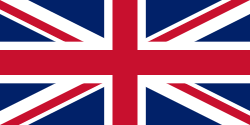Bitva u Beaver Dams
| Bitva u Beaver Dams | |||
|---|---|---|---|
| konflikt: Britsko-americká válka | |||
 Laura Secord varuje kapitána FitzGibbona | |||
| Trvání | 24. červen 1813 | ||
| Místo | poblíž Thorolda | ||
| Souřadnice | 43°7′3″ s. š., 79°11′7″ z. d. | ||
| Výsledek | drtivé vítězství Britů (Kanaďanů) | ||
| Strany | |||
| Velitelé | |||
| |||
| Síla | |||
| |||
| Ztráty | |||
| |||
| Některá data mohou pocházet z datové položky. | |||
Bitva u Beaver Dams (24. června 1813) představovala relativně malé, ale enormně významné střetnutí britsko-americké války.
Americké jednotky se pokusily překvapivým útokem zaskočit a zlikvidovat hlavní britské síly na Niagarském poloostrově a obsadit tuto strategicky i hospodářsky významnou oblast. Jejich plán však přišel naprosto vniveč, když se američtí důstojníci pochlubili s tímto plánem před manželi Secordovými, u nichž byli ubytováni. Laura Secord velmi časně ráno opustila dům a podnikla neuvěřitelnou 32 km dlouhou cestu divočinou, aby nakonec zcela vyčerpaná seznámila s americkým plánem velitele britských jednotek, kapitána FitzGibbona. Ten později výslovně napsal, že vzhledem k divokosti krajiny, kterou šla, a vzhledem ke strašlivému vedru, který ten den panovalo, by nikdy nevěřil, že je takový výkon možný.
Předem varovaný FitzGibbon neváhal a nastražil se svými indiánskými spojenci na americkou jednotku past. Informace od paní Secordové se ukázaly být až na malý detail zcela přesné (Američané nepřišli 23. června, ale až o den později). Americký oddíl nic netušíc nakráčel přímo do pasti a byl zničen. Uprchlo pouze 31 Američanů, ostatní padli nebo se urychleně vzdali Britům. Původně sice hodlali bojovat déle, ale FitzGibbon je upozornil, že už teď mají Mohawkové mrtvé a raněné a bude-li prolita ještě nějaká krev, patrně je už „nebude schopný zvládat“, kterýžto argument americký velitel shledal jako dostatečný důvod k urychlené kapitulaci – koneckonců, bitva byla stejně již ztracena.
Média použitá na této stránce
Digital reproduction of the Star Spangled Banner Flag, the 15-star and 15-stripe U.S. garrison flag which flew over Fort McHenry following the Battle of Baltimore in the War of 1812. Seeing the flag during the battle, and again the following morning, inspired Francis Scott Key's song The Star-Spangled Banner, now the U.S. national anthem. During the battle a smaller "storm flag" was flown; it was replaced by this larger flag early the next morning, which is the flag Key saw then. This larger flag is now displayed at the National Museum of American History in Washington, D.C. For several decades it remained in the family of Fort McHenry's commanding officer, before being given to the Smithsonian in 1912. The family cut pieces out of the flag from time to time as gifts.
The original flag was 42 feet long and 30 feet high, with each stripe being about two feet, and the stars being about two feet in diameter. It was made by Mary Young Pickersgill and her assistants. More info on the original dimensions here. The stars seem to mostly point to the side, except for one (the bottom right) which points down. One star has been cut out of the actual flag, so I'm guessing that originally pointed to the side as well (Fort McHenry flies a flag (File:Ft mchenry 15starflag.jpg) with a similar star pattern, but it looks like they are all to the side, and the other dimensions look similar to a modern flag). I guesstimated other dimensions and star positions based on File:Star-Spangled-Banner-1908-1919.jpg; the union (blue area) looks to be about 19 feet wide. The star rows look to be evenly distributed; i.e. the distance between the top/bottom edges and the center of a star row looks to be about the same as the distance between two (centers of) rows. Not so left-to-right; they are pretty close to the right edge and even closer to the hoist side. Also available here, page 12.Laura Secord warning Lieutenant James Fitzgibbon of an impending American attack, June 1813.


